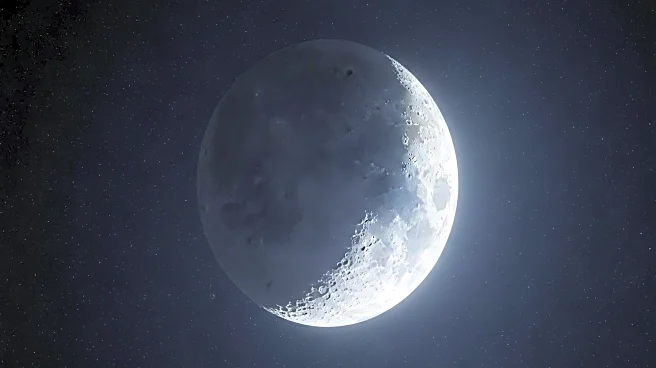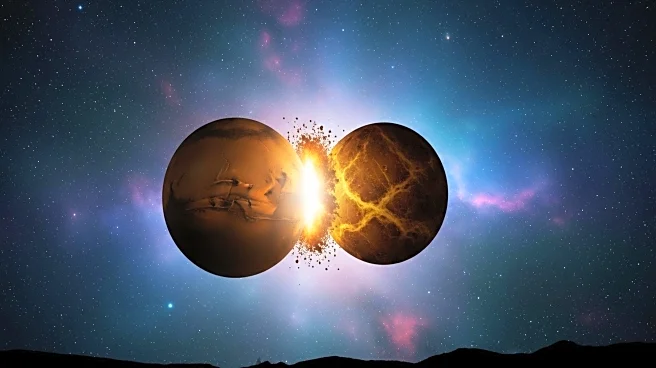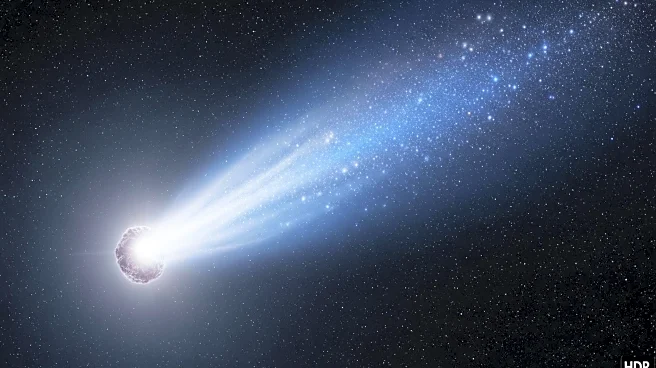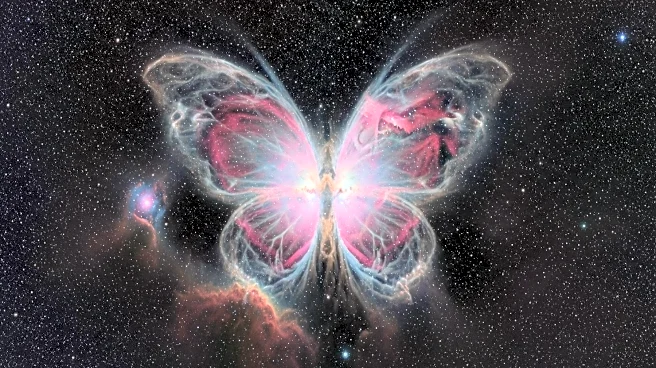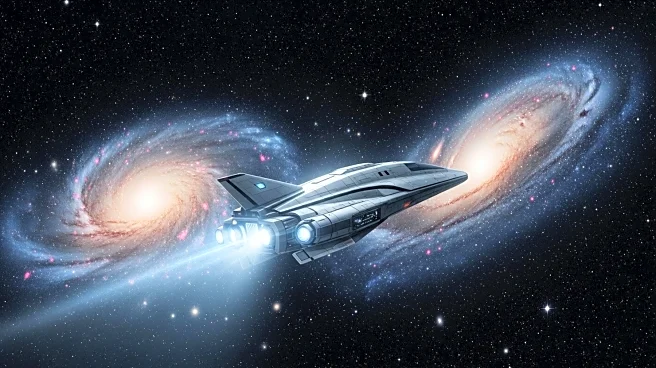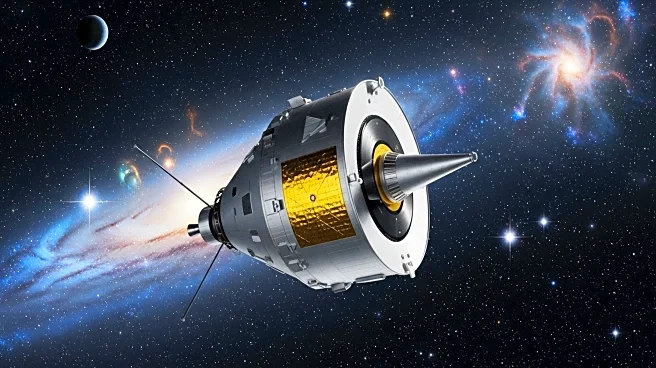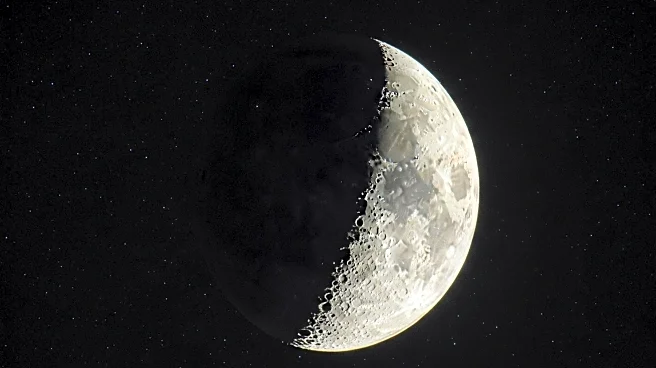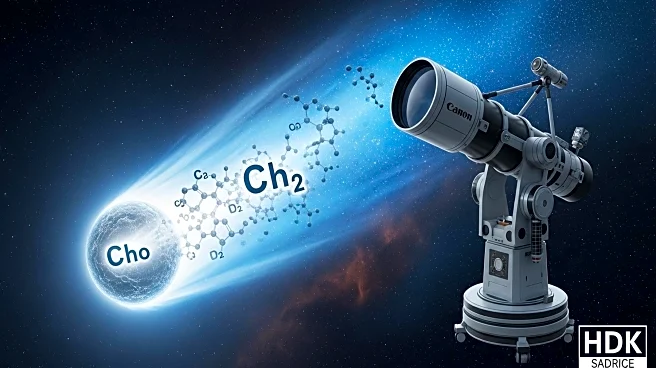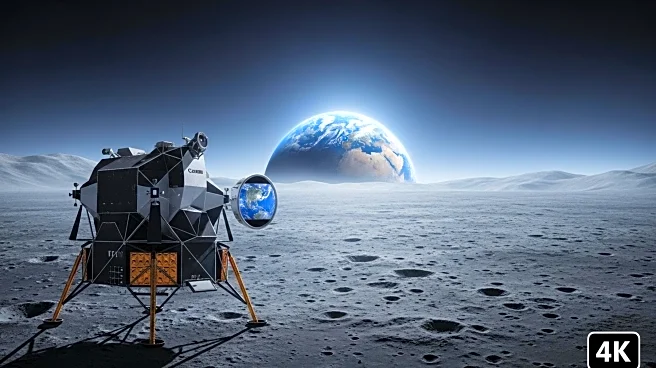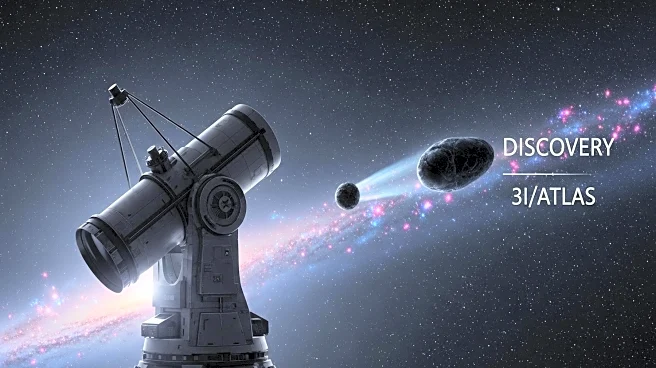What's Happening?
NASA has reported that the moon is currently in its Waxing Crescent phase as of August 28, 2025. During this phase, 25% of the moon is illuminated as observed from Earth. This phase is part of the moon's 29.5-day orbital cycle, which results in different moon phases based on the changing angles between the Sun, Moon, and Earth. The Waxing Crescent phase follows the New Moon and precedes the First Quarter, where half of the moon's surface is visible. This cycle is a natural occurrence that allows observers to see various features on the moon's surface, such as the Mare Crisium and Mare Fecunditatis, with the aid of binoculars or telescopes.
Why It's Important?
Understanding the moon's phases is crucial for both scientific and cultural reasons. Scientifically, it helps in planning astronomical observations and space missions. The phases also influence tides on Earth, which can impact marine and coastal activities. Culturally, moon phases have been used to mark time and are integral to various calendars and traditions worldwide. For NASA, sharing information about the moon's phases helps engage the public with space science and fosters interest in astronomy. This engagement is vital for inspiring future generations of scientists and maintaining public support for space exploration initiatives.
What's Next?
The next significant phase in the lunar cycle is the Full Moon, expected on September 7, 2025. This will provide an opportunity for enhanced visibility of the moon's surface features and is often a time for increased public interest in lunar observations. NASA and other astronomical organizations may organize events or provide resources to help the public engage with this celestial event. Additionally, ongoing observations of the moon's phases contribute to scientific research and understanding of lunar phenomena.
Beyond the Headlines
The study of moon phases also has implications for understanding Earth's natural satellite's history and evolution. By observing the moon's surface during different phases, scientists can gather data on its geological features and changes over time. This information is crucial for future lunar exploration missions, including potential human settlements on the moon. Moreover, the cultural significance of the moon phases continues to influence art, literature, and folklore, highlighting the moon's enduring impact on human society.
